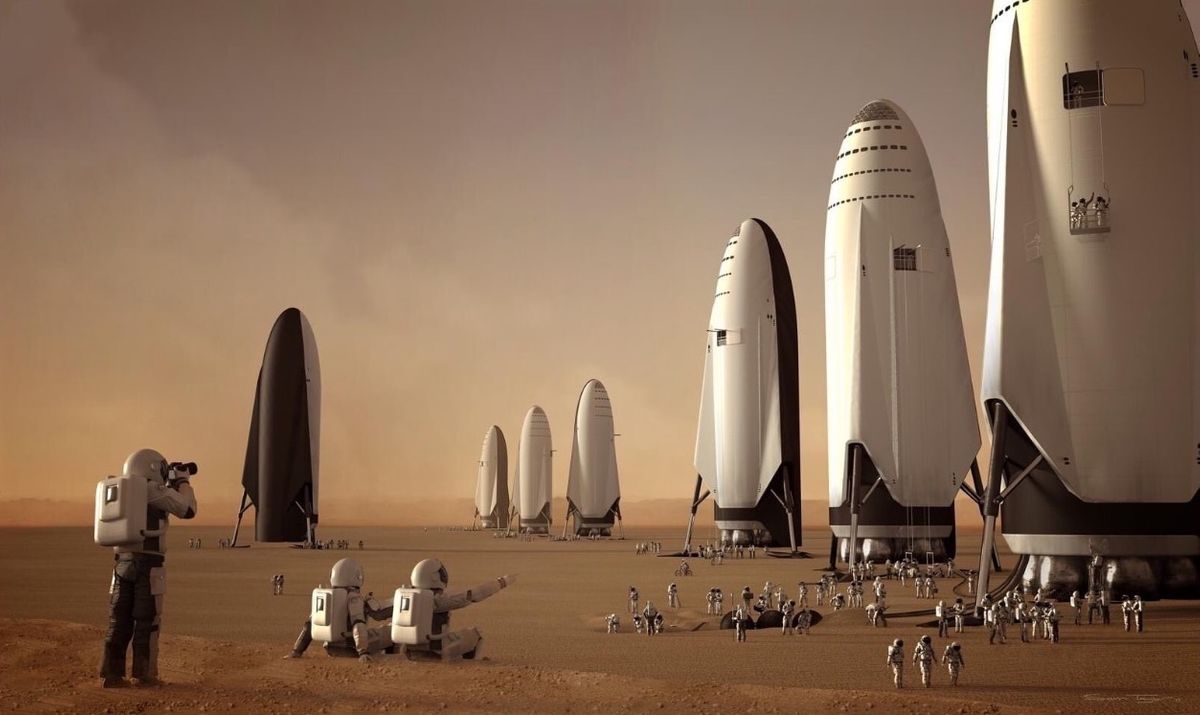The challenge to astronauts

As breakthroughs in technology accelerate the advent of a space economy, Neil Armstrong’s “giant leap for mankind” is beginning to look a lot like baby steps.
Not to diminish the achievements of the Apollo 11 team–it really was humankind's greatest achievement to date. But in the early days of the space program, the most obvious challenge to astronauts was technological: how would we get these guys to the moon and back safely and reliably?
The answer, of course, was in thousands of hours of engineering, thermodynamics, and elements of the natural and physical sciences that I, myself, couldn't do justice in explaining. Luckily, we can summarize the problem quite simply: it was 1969. The technology being used for spacecraft at the time was nothing short of extraordinary. But the technological revolution had yet to take off.
The 1970s marked the decade when consumer technology took over the shelves. The 70s saw the invention of the floppy disk, the portable cassette player, and even the first cellphone. It also marked the beginning of the age of personal computing, with the production of the Apple I in 1976.
The point here is that in 1969, the level of technology that existed was several orders of magnitude lower than that which exists today. In the 50 sum years that have passed since Neil Armstrong first stepped on the lunar surface, technology evolved into something far more profound and integrated. It has taken over our lives and the majority of the world is running on it. Now it's what propels us forward in the exploration of our universe.
The last half-century saw several innovations expand the technological prowess of the space industry. The development of landing mechanisms to support rocket reusability marks a turning point in the cost-effectiveness of space travel. While the implementation of autonomous vehicle controls is an absolute game-changer in itself; reducing the skill requirements of spacecraft operation and allowing artificial intelligence to pilot our journey to and from the stars.
With these innovations, the technological burden on astronauts has been reduced dramatically since we last landed on the moon. Now, NASA plans to go back to the moon for the highly anticipated Artemis Project which will begin the construction of the first-ever lunar base.
So when AI-assisted reusable spacecraft are being regularly utilized to bring astronauts to and from the moon, what problems are left?
Psychological ones, of course.
The psychological problems of space travel
Space is an extremely hostile environment; difficult to inhabit for long periods of time. But the very nature of being an astronaut means coping with isolation—away from family and loved ones—for long periods of time. It means living and working in highly unconventional environments where disaster is always one bad decision away. An astronaut's ability to maintain a calm and positive mind is absolutely critical to mission success.
Astronauts deal with stress on a level that you could probably never fathom. Daily. Meanwhile, they are expected to perform in top condition while the fate of the mission rests in their hands. But that’s not all. On top of their own psychological stress, there are social and organizational stressors as well, such as the burden of bureaucracy, dealing with leadership, resolving conflict, and navigating the dynamics of the group.
It's worth noting, however, that these problems have always existed for astronauts. But for a long time, they weren't being addressed. Up through the mid-80s when astronauts co-occupied the Russian space station Mir, behavioral research was left out of the equation in the U.S. Space program.1 Even the assessment of individual astronaut performance was prohibited. Although many experts spoke out, the study of psychology in the U.S. space program may have been several decades behind that of other programs.2
One could argue that the technological burden of the time is what held us back. In the early days of the space program, much of the focus for NASA was on the natural and physical sciences.3 But this may have been a simple cognitive bias where the most pressing problems seemed to be the ones that could be physically measured.4
Or maybe it was groupthink—which we’ve seen play into the Challenger disaster of 1986,5 where the problem that caused the explosion was known by engineers before the launch but dismissed by management. Regardless, such disasters should be enough to consider the impact of psychological and organizational factors in the success of space missions.
And as we continue to innovate in the field, technological burden will continue to diminish. Eventually, what remains will be the set of problems to which technology does not have all the answers.
To combat this, we need psychologists and journalists in the field researching and reporting on the psychology of space exploration now more than ever. We may well be just a few decades shy of becoming a true space-bearing civilization. The ways in which we lead and manage people will be a critical factor in our success.
Researchers like Suzanne Bell studying team composition and dynamics in space travel is a great example of some of the work that still needs to be done. Journalists like Lynn Levy on The Habitat podcast are demonstrating an innovative approach to spreading the word. But we also need organizational leaders guiding the space industry into an equitable future; one that works for everybody and isn't barred by psychological or social constraints; one that reduces bias, groupthink, and conflict while embracing diversity, driving efficiency, and solving equally important people problems.
If you ask me, I/O psychologists will fill some of the most important shoes at industry-leading space agencies in the coming decades.
Let's make sure that when it comes to space travel, history does not repeat itself.
Footnotes
- Although its role at the inception of the space program was apparent, psychology in the U.S. space program disappeared for many years after. It wasn’t until 1990 when the U.S. joined Russia on the Russian space station, Mir, that NASA recognized the importance of psychology in space. Vakoch, D. (2011). Psychology of space exploration: Contemporary research in historical perspective (pp. 1). Washington, D.C.: National Aeronautics and Space Administration.
- In 1990, Patricia Santy, author of Choosing the Right Stuff: The Psychological Assessment of Astronauts and Cosmonauts, noted that psychology played a minimal role in astronaut selection and that analysis into astronaut performance was a prohibited exercise at NASA. Patricia likened their use of psychology in the industry to being 20-30 years behind. Vakoch, D. (2011). Psychology of space exploration: Contemporary research in historical perspective (pp. 6-7).
- "Robert Helmreich's point was that, generally, those disciplines that are rooted in biology, engineering, and experimental psychology have found greater acceptance within the space program than disciplines rooted in personality, social, and organizational psychology." Vakoch, D. (2011). Psychology of space exploration: Contemporary research in historical perspective (pp. 7).
- This may be a form of Anchoring bias or focalism: a cognitive bias where there is a tendency to more heavily weigh an initial piece of information (the "anchor") when making subsequent judgments or decisions.
- The loss of Challenger reflected organizational and behavioral problems such as miscommunication, faulty judgment, and the potential for groupthink mechanisms to unfold. M. M. McConnell, Challenger: A Major Malfunction (New York: Doubleday, 1987); D. Vaughan, The Challenger Launch Decision: Risky Technology, Culture, and Deviance at NASA (Chicago: University of Chicago Press, 1996).
Cover art by Sam Taylor.
